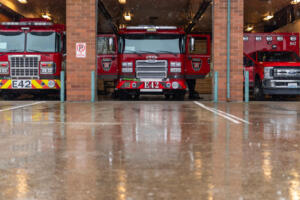The interlocal agreement that created the joint Camas-Washougal Fire Department (CWFD) in 2013 is set to expire at the end of this year.
In anticipation, city and fire officials in Camas and Washougal have been trying to nail down details for a new interlocal agreement (ILA) that would, ideally, maintain a joint fire department and provide the same level of fire and emergency medical services Camas-Washougal residents are used to, without straining Washougal’s more limited revenue resources.
This week, Camas officials who act as liaisons for the fire department’s Joint Policy Advisory Committee (JPAC), said they preferred an option that would do just that.
During the Camas City Council’s workshop on Tuesday, June 20, Camas Mayor Steve Hogan provided council members with various options for funding the joint fire department moving forward.
“The intent is to take the existing (Camas-Washougal Fire Department) and assist them toward a future with a regional fire authority,” Hogan said, adding that the “ramp up time” to a new regional fire authority (RFA), which would create a separate taxing district and would have to be approved by voters, was likely three years. “It will take a planning committee a year or two to create the structure for this.”





